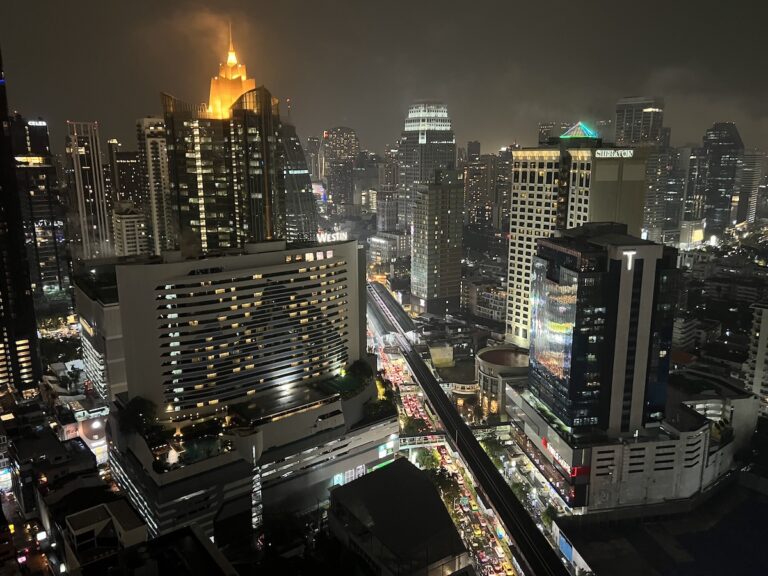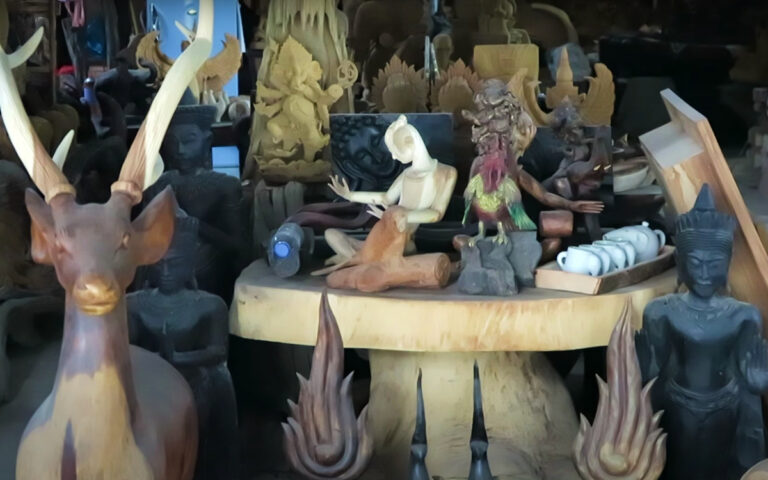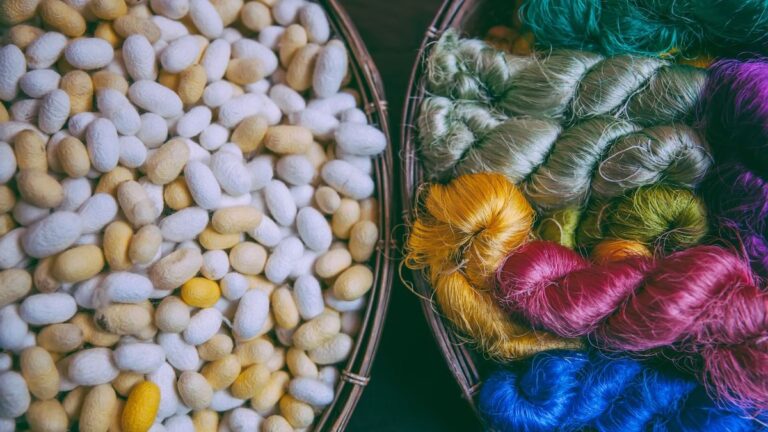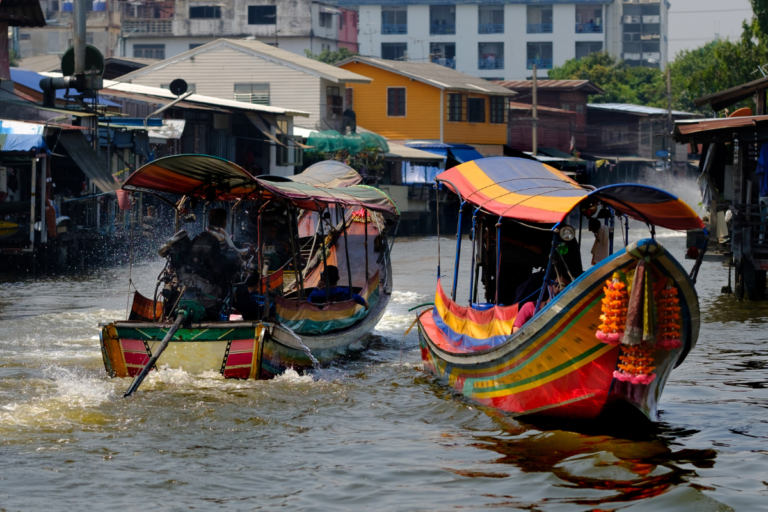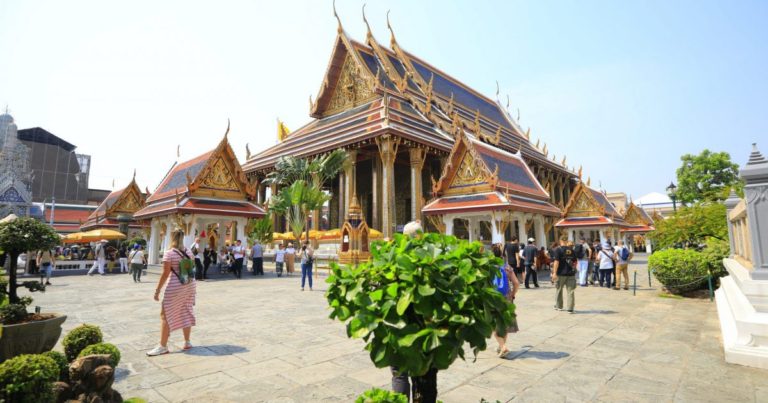Jim Thompson
The Thai Silk Company is one of the most famous silk producers in Thailand. The company was founded in 1951 by former OSS operative Jim Thompson. The American national is credited with single-handedly turning Thai silk production from a tiny cottage industry into an article that is recognized globally as synonymous with premium quality.
From the late 1940s onwards, Thompson’s work in the Thai silk manufacturing field and his passion for collecting old artifacts and antiques made him one of the best-known farang in Bangkok. With his inexplicable disappearance in Malaysia in 1967, the legend of Jim Thompson Thompson passed into the realms of myth.
Who Was Jim Thompson?
James Harrison Wilson Thompson was born in the eastern US in 1906. He was schooled in the vicinity before going to Princeton and studying architecture. Throughout the 1930s he worked as an architect in New York City. In 1941, Thompson joined the US Army and was seconded to OSS (the predecessor of the CIA).
OSS missions saw Thompson serve in North Africa, Italy, and France. He was assigned to Bangkok in the closing days of WWII, but actually arrived after the Japanese had surrendered. Thompson stayed on in Bangkok as OSS station boss until his 1946 discharge from the army.
With the end of the war, Thompson was convinced there would be a demand for travel to Bangkok and Southeast Asia and he found himself once again in the Thai capital. In the late 1940s, there was only one hotel of significance in Bangkok. Thompson set about getting the Chao Phraya Riverside Oriental Hotel ready for an influx of Western travelers and in doing so mixed with the likes of William Somerset Maugham and Noel Coward.
Creation of the Thai Silk Company Limited
With the Oriental up and running, Thompson then looked for a new project and saw the rich prospects of Thailand’s lustrous silk. With his design experience and a keen eye for aesthetic beauty, Thompson set the tone for contemporary Thai silk with bold colors and patterns. He also ensured that once patterns had been designed the weavers stuck to them.
The Thai Silk Company was founded by Jim Thompson in 1948 in partnership with George Barrie. It played a pivotal role in revitalizing the Thai silk industry. Jim Thompson focused on reviving and promoting traditional Thai silk weaving techniques, working closely with local weavers and artisans to create exquisite fabrics of exceptional quality.

By allowing female weavers to work their looms at home, he enabled the Thai silk cottage industry to survive, albeit on a much larger scale. The Thai Silk Company’s hub of operations was established in Korat only after he vanished in ’67.
Thompson’s keen eye for design and his understanding of the international market helped him transform Thai silk into a sought-after luxury item. He introduced modern color combinations and patterns, blending traditional Thai motifs with contemporary influences, which appealed to a wide range of customers.
House on the Klong
Nowadays, Jim Thompson is as famous for his so-called House on the Klong as he was in his heyday. While he was living in Bangkok, he started collecting the traditional Thai wooden structures which make up the museum complex named after him. Expeditions to Ayutthaya and other locations in the central plains enabled Thompson to buy the six hardwood structures for his house.
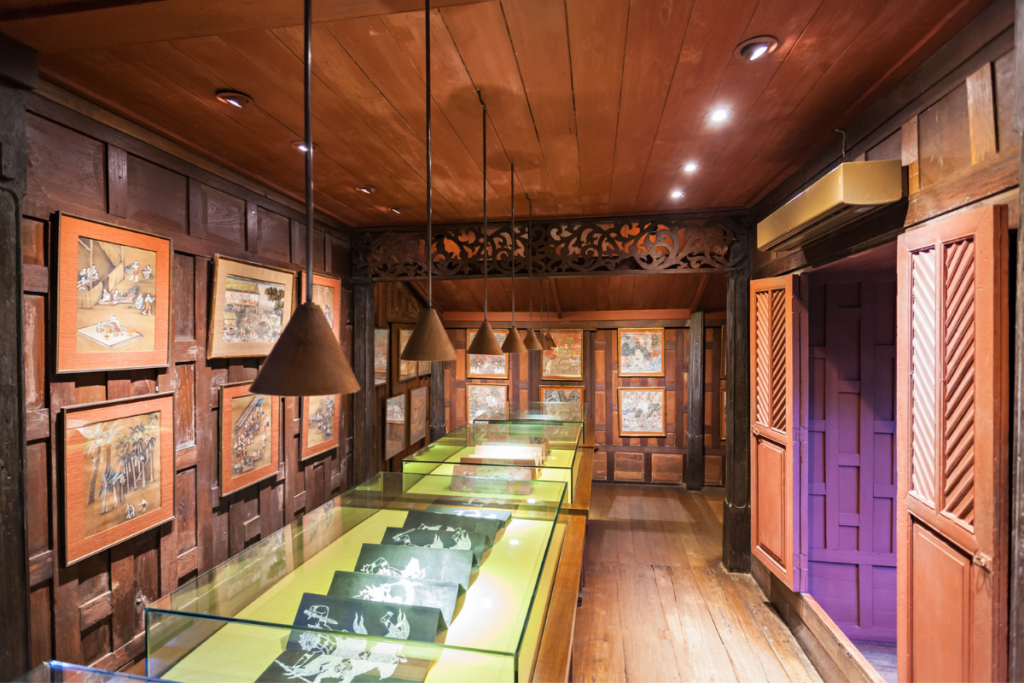
The different buildings were then reassembled beside the Mahanag Canal in central Bangkok. They were erected as they had been in days of yore and raised on stilts above the ground. The only differences were that a central flight of stairs was under the shelter of the roof instead of being open to the elements and some floors were created from Italian marble tiles rescued from an old Bangkok palace.
It took Thompson and his skilled team of artisans a year to finish the house. Once that was done, he started filling it with artifacts such as Thai and Cambodian Buddha images, Benjarong porcelain, and Belgian cut-glass ornaments. In the dining room, he ensconced a table that had once belonged to King Rama V. Statues of Chinese lions guard the main doorway.
Over the next few years, the silk king and his pet cockatoo entertained local and traveling guests at what became known to one and all as the Jim Thompson House. For his services to the Thai silk industry, Thompson was awarded the highest accolade open to a farang, the Order of the White Elephant.
Jim Thompson’s Disappearance
Thompson’s disappearance in 1967 only compounded the legend and aura of intrigue that surrounded him. In March of that year, he was staying with friends at a bungalow in Malaysia’s Cameron Highlands. On the 26th he went for an afternoon walk and never returned.
The people Thompson was staying with reported him missing around seven hours after he went for the fateful walk. Despite a couple of unconfirmed sightings in the afternoon and several thorough searches over the following 10 days, no trace of the Thai silk king has ever been found. Around 350 Malaysian police, local trackers, and British soldiers combed the jungle in the searches.
Various theories ranging from a ‘tiger ate him’ to ‘he was kidnapped by communist rebels while on a clandestine CIA mission’ have been put forward to explain the disappearance, but to this day nobody knows for sure what happened. The conspiracy speculation took on more weight when Thompson’s sister Katherine was murdered at her Pennsylvania home a few months later.
Jim Thompson House Museum
Address: 6 Kasem San 2 Alley, Wang Mai, Pathum Wan, Bangkok 10330, Thailand
People wishing to get interesting insights into the enduring legend of Jim Thompson can do so with a visit to the Jim Thompson House Museum. The house is only a short walk from the BTS Skytrain National Stadium Station and is open to the public from 09:00 to 17:00 every day. A guided tour costs 200 baht and lasts 40 minutes.

